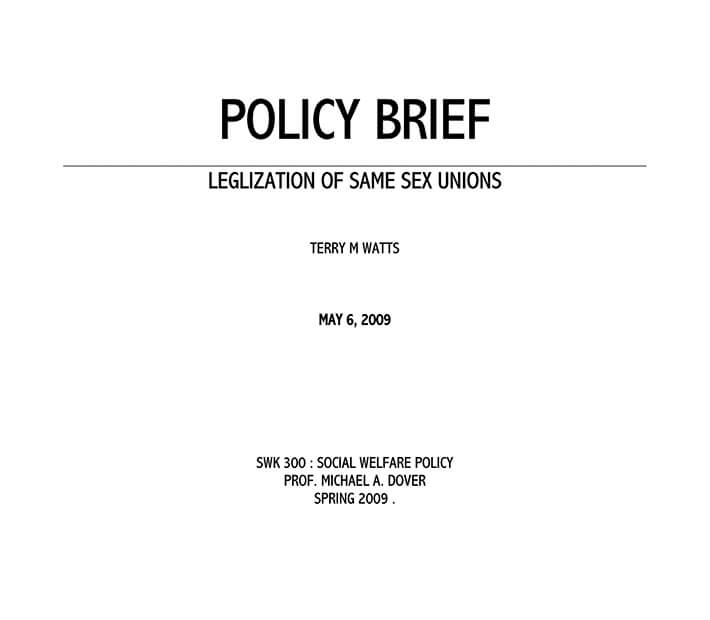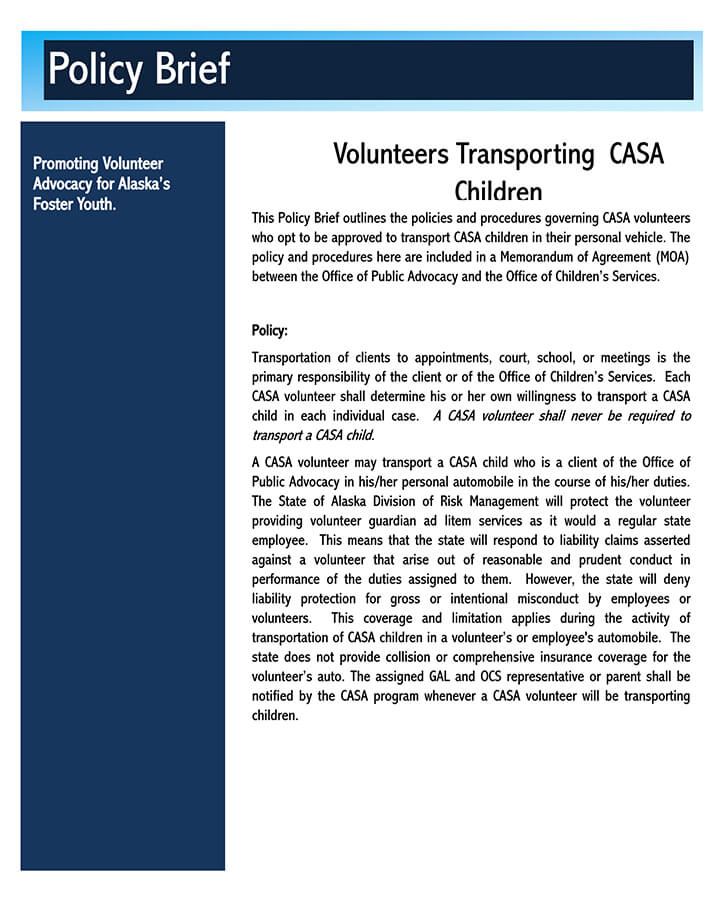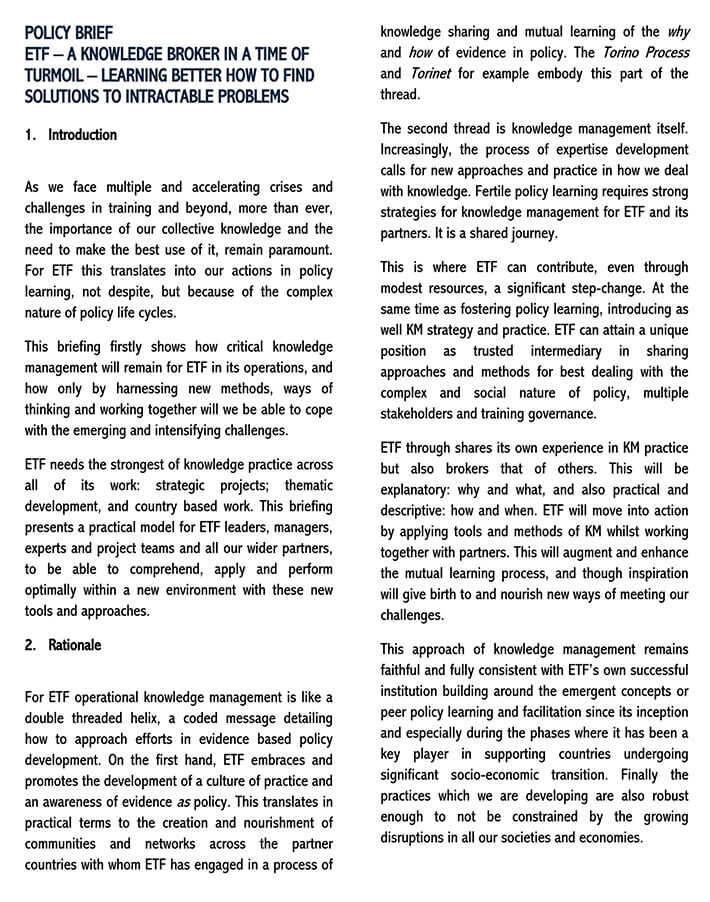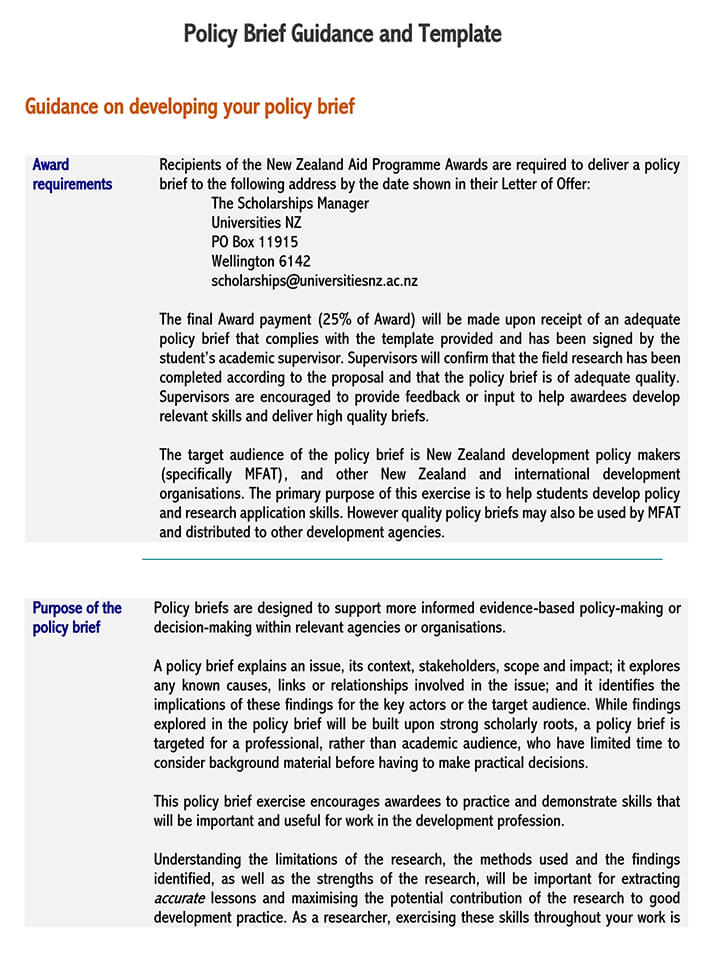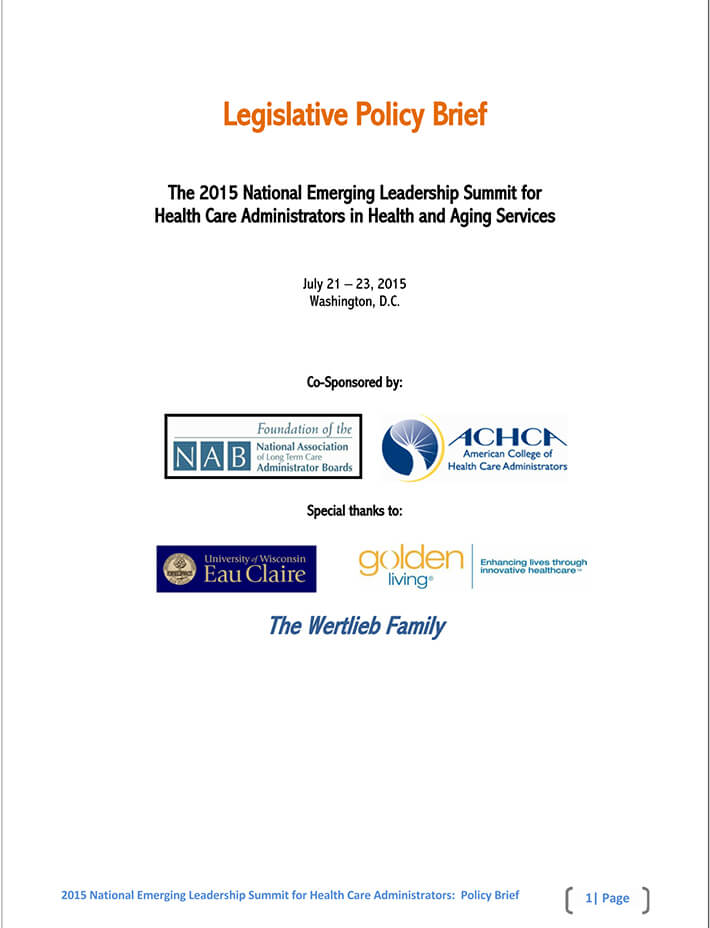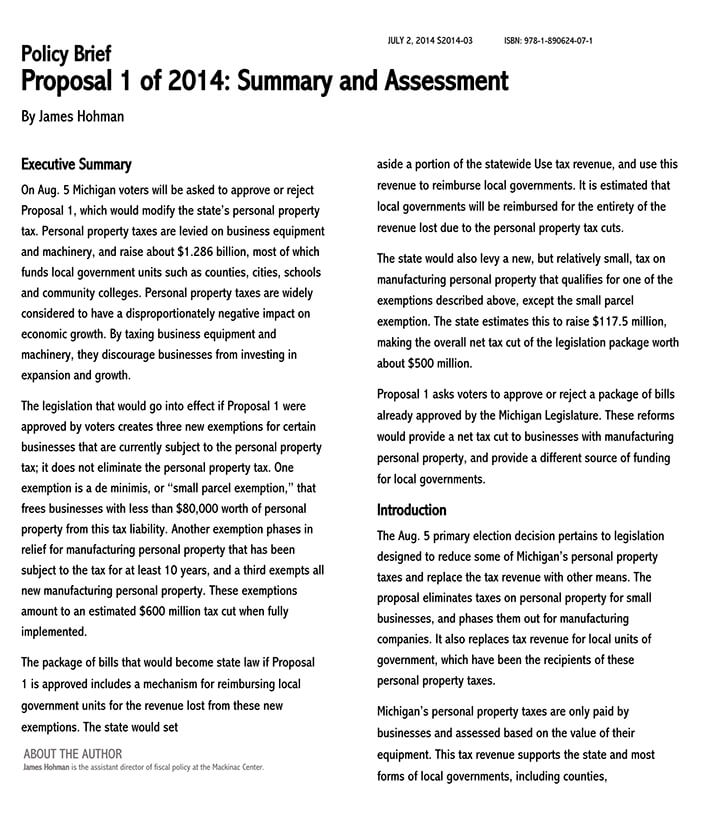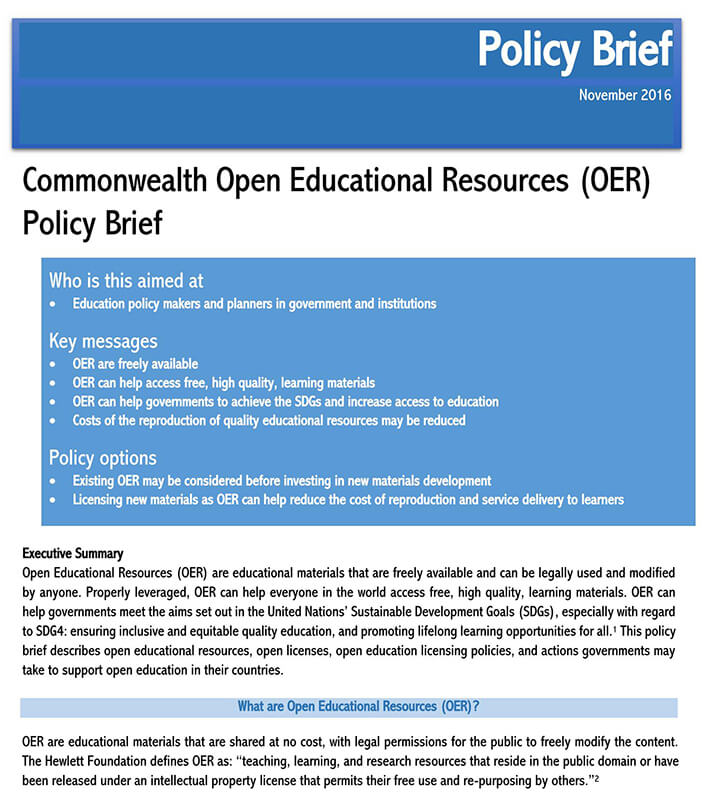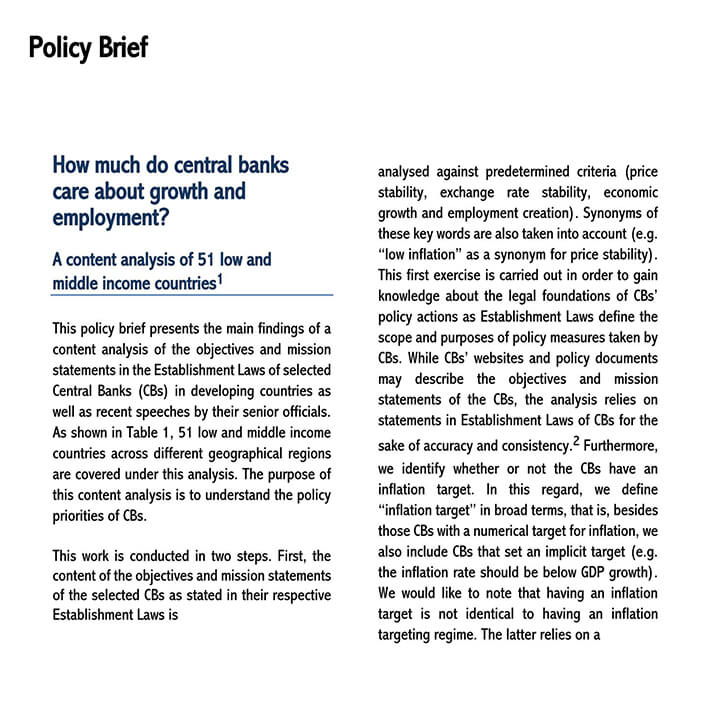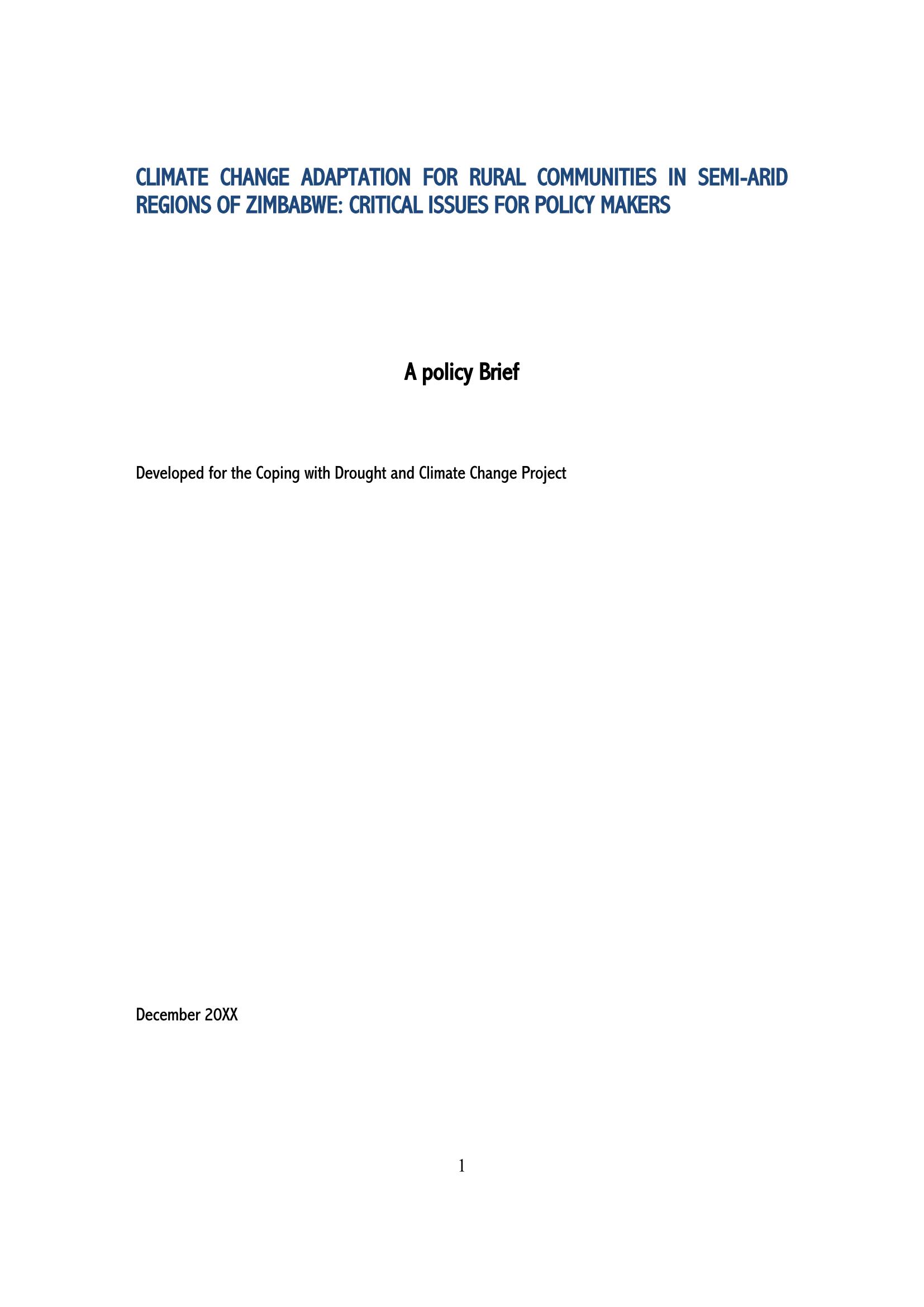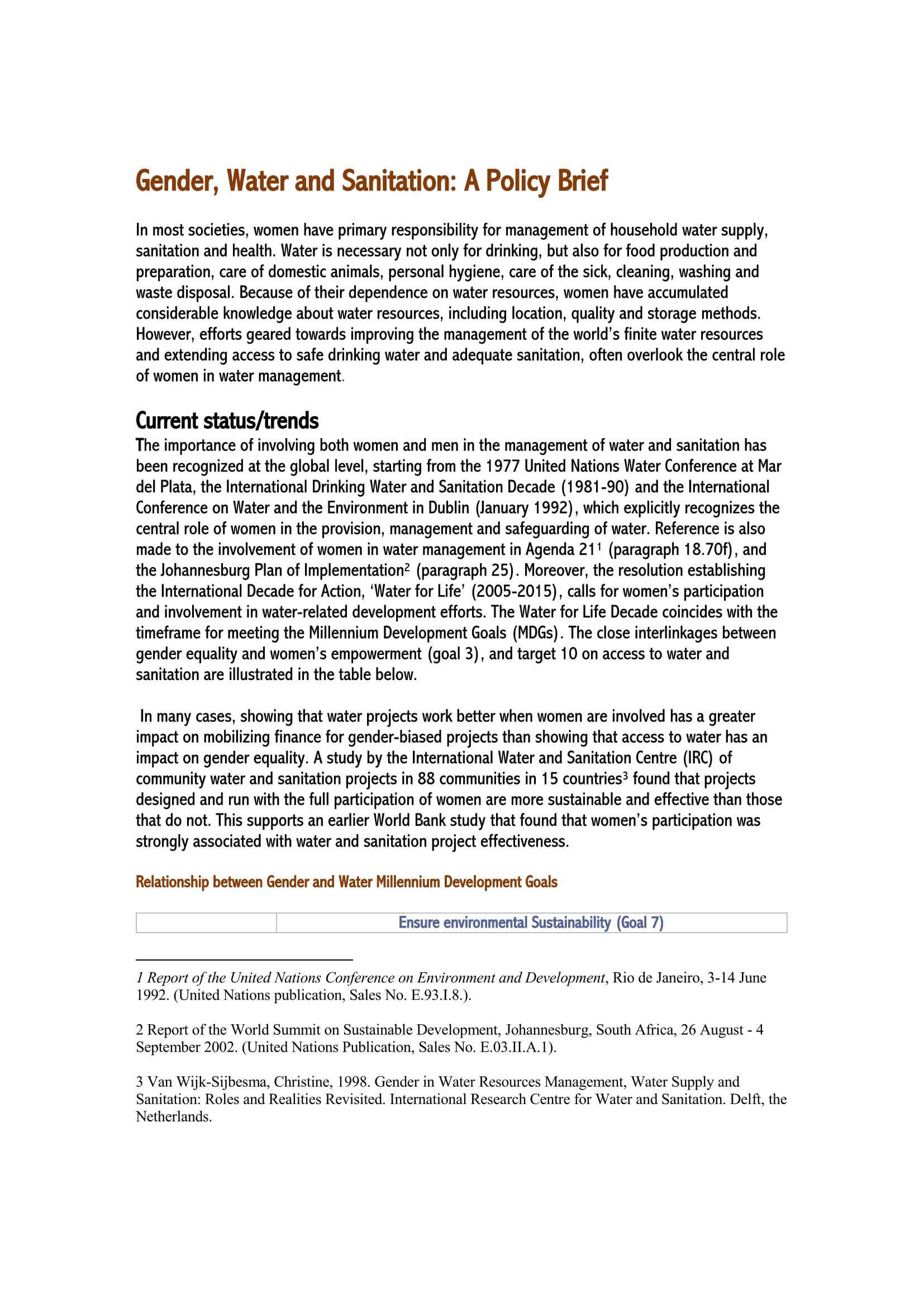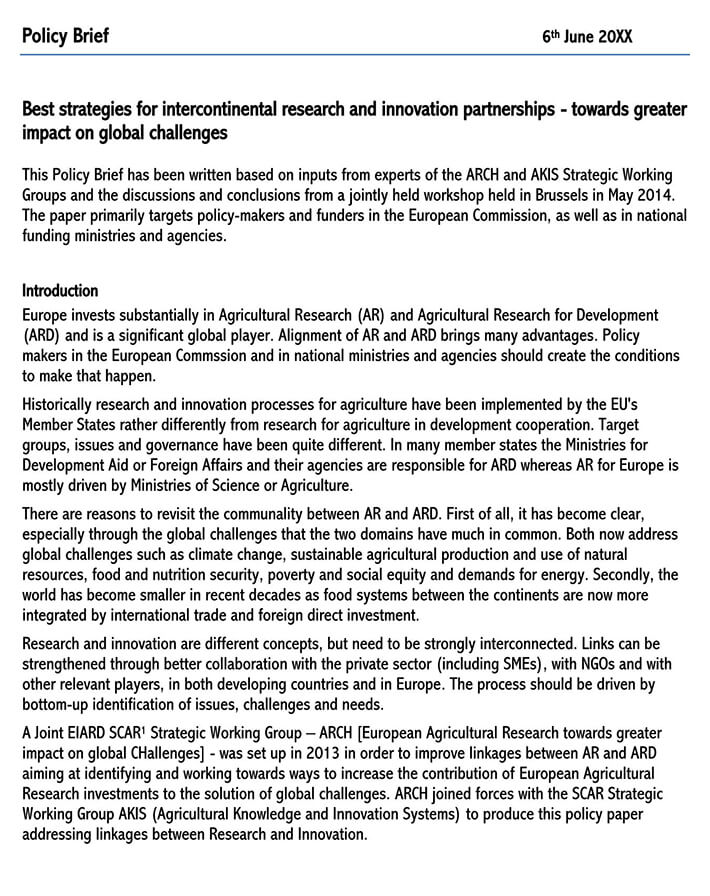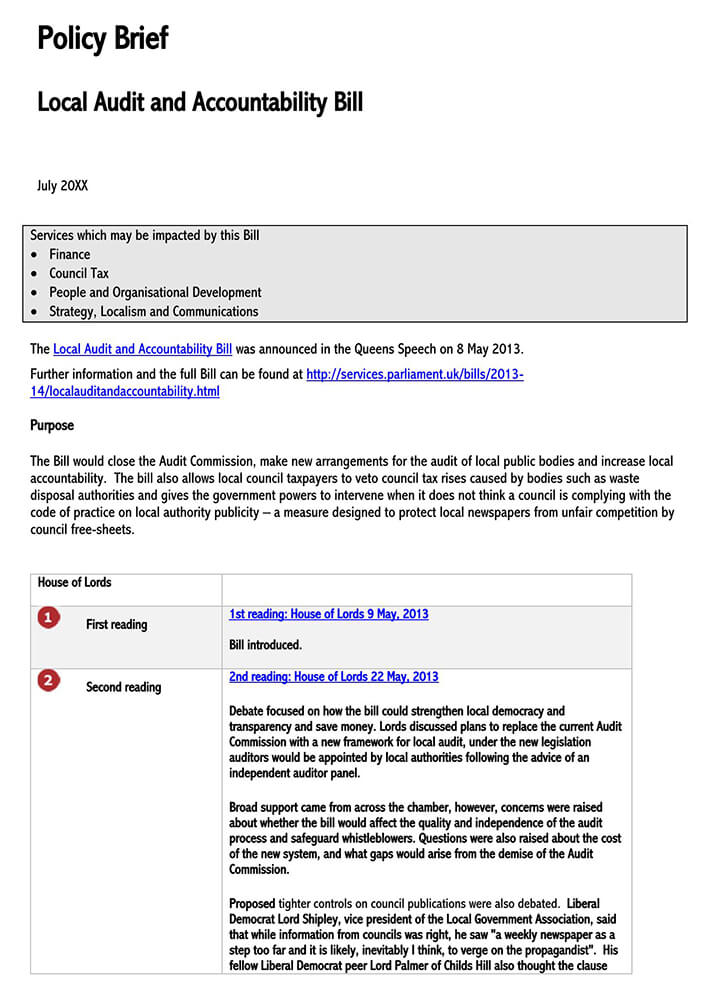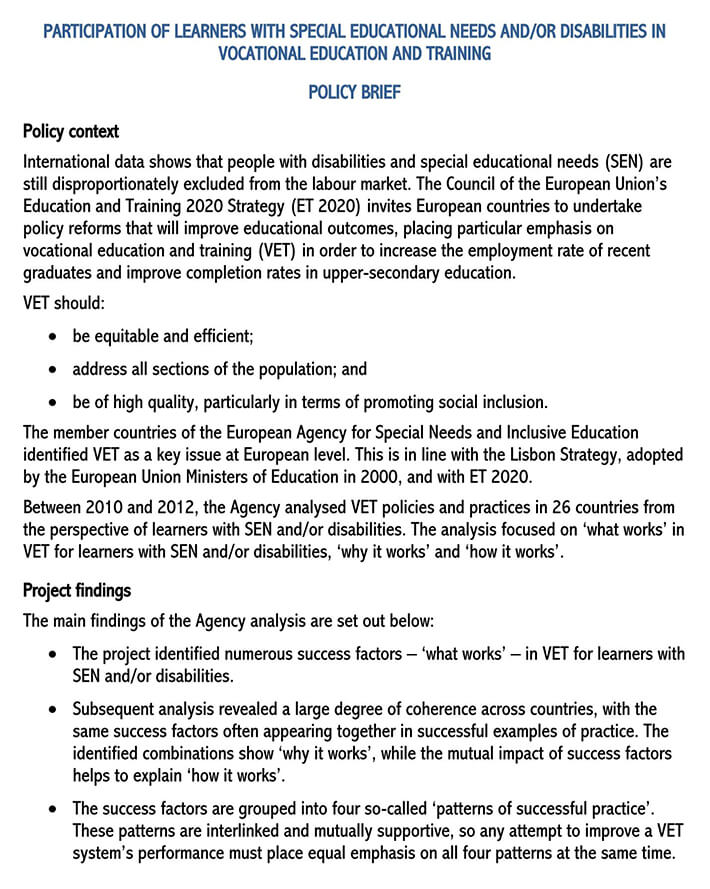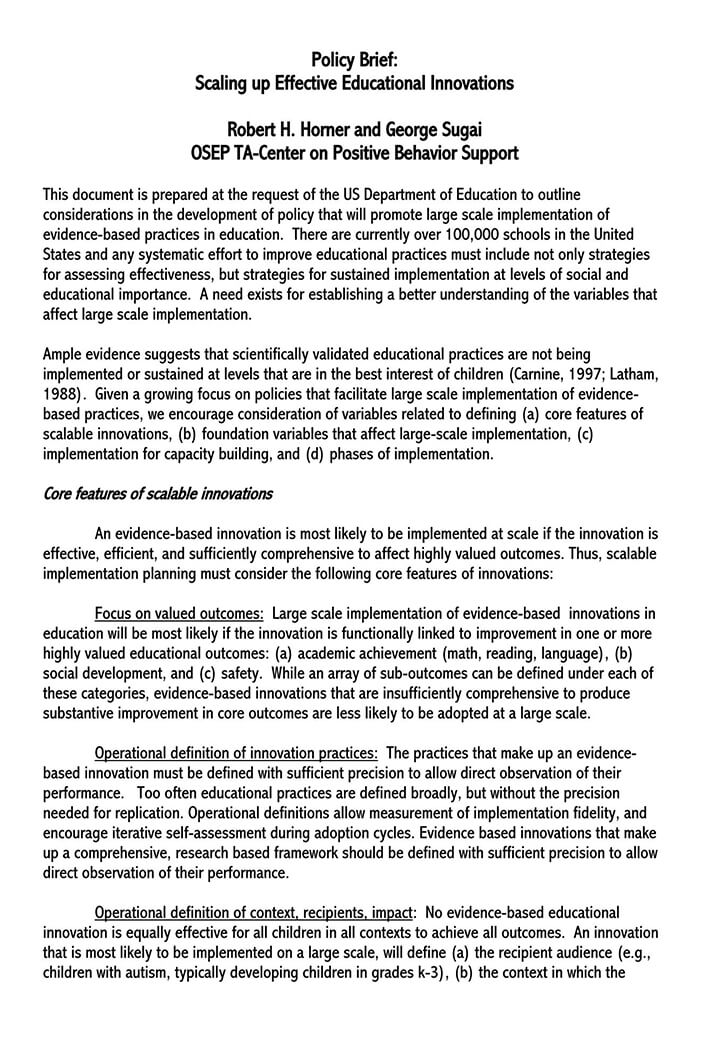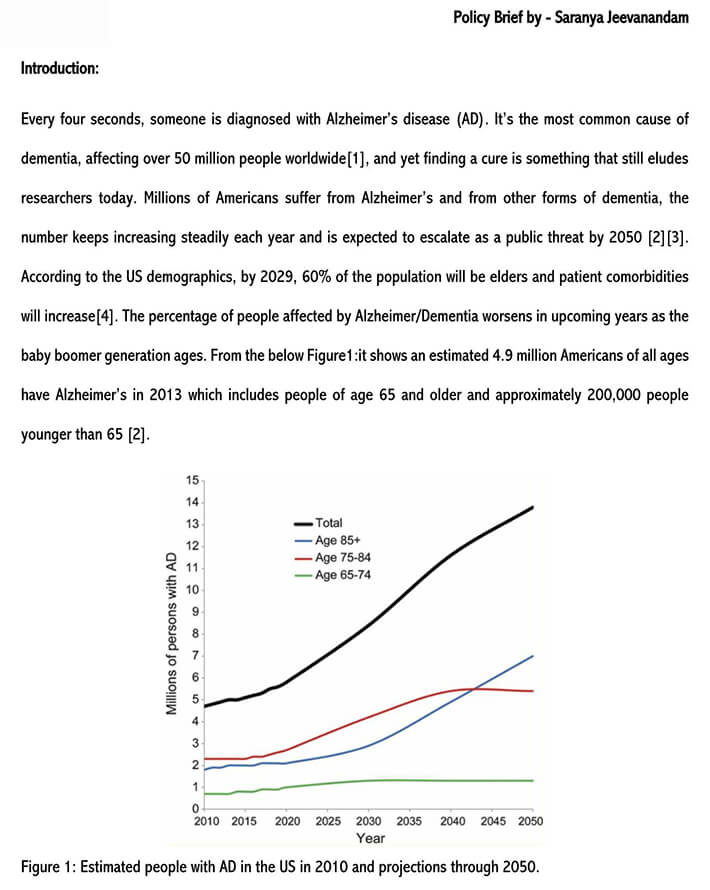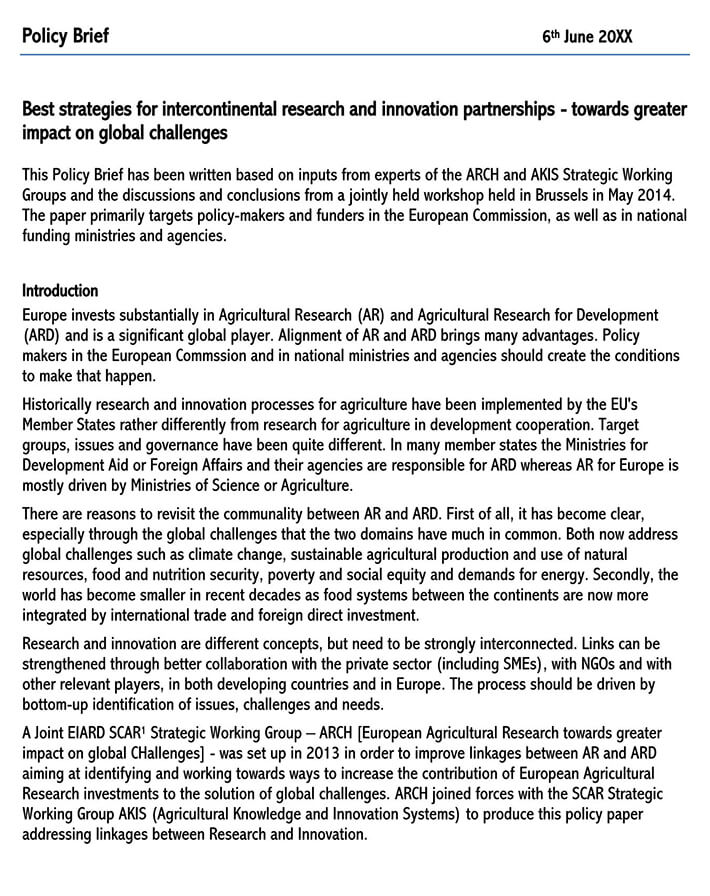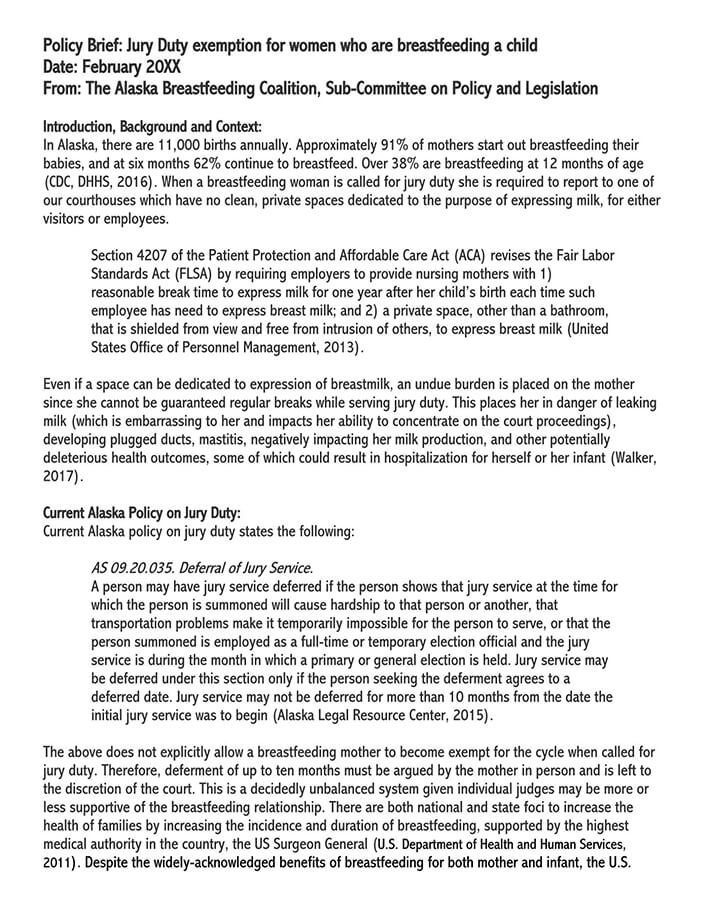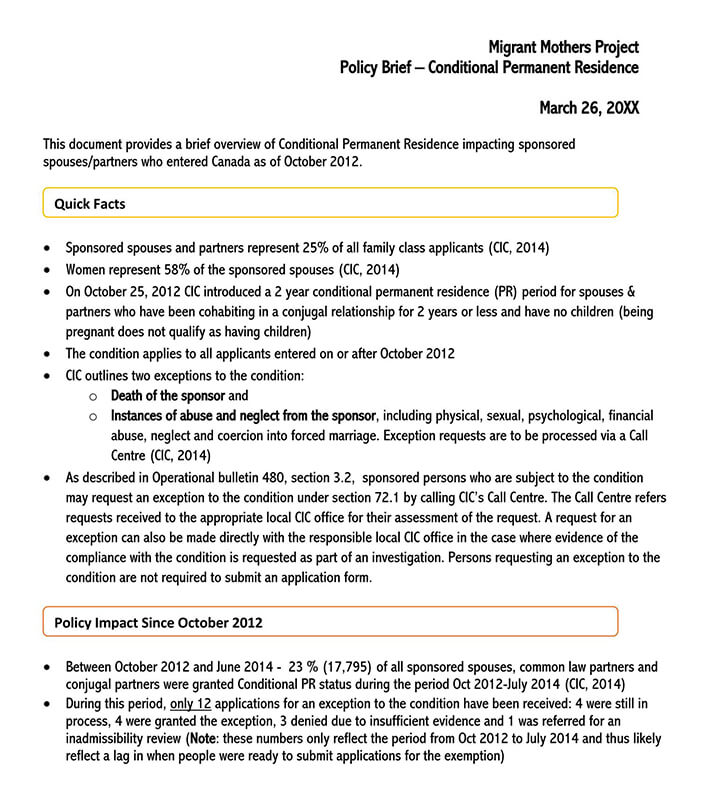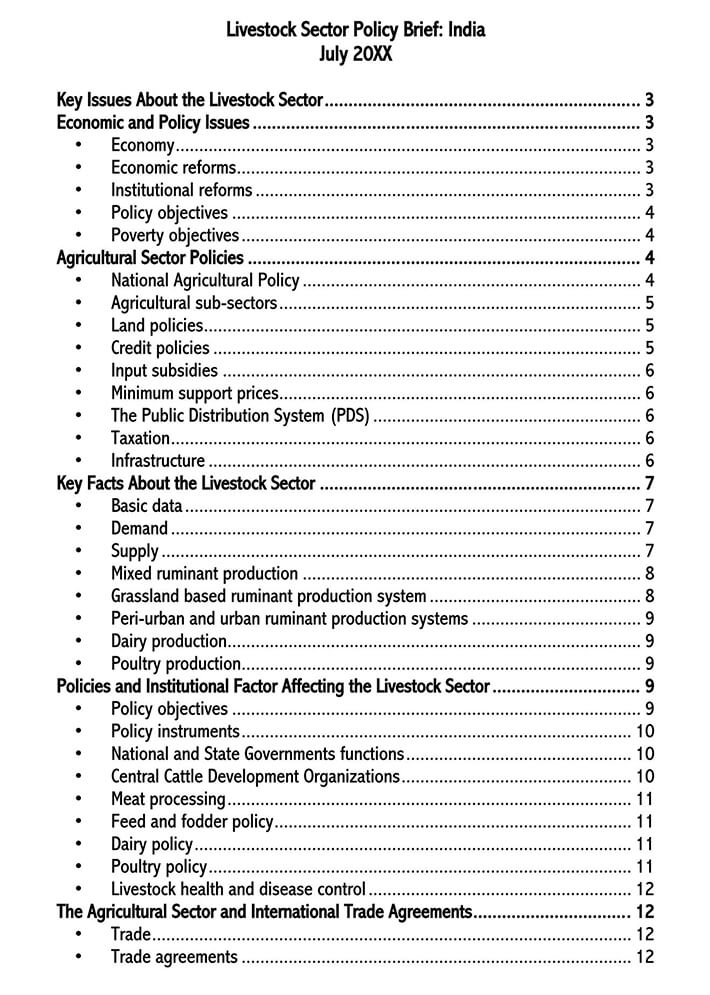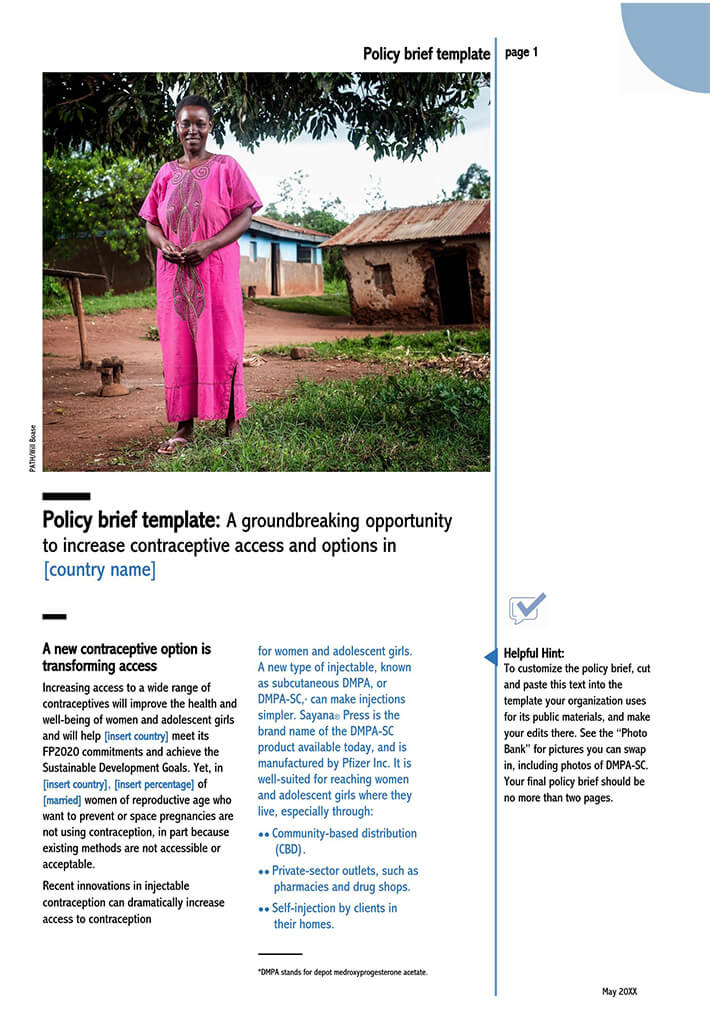Research proposals are often too complicated for the layman to understand. The contents, therefore, have to be broken down into a form or structure that just about any other person can understand. This requires the use of a simpler and more self-explanatory document called the policy brief.
The policy brief is basically a small document that aims to break down the findings of research in a form that is easily understood by just about anyone. They are of two main kinds.
These are the:
- An advocacy brief tends to vouch for and advance the course of a particular action.
- Objective Brief aims at giving a balanced view of the research proposal for policymakers to finally draw their own conclusions.
As with any other vital document, this policy brief has to operate within certain parameters. Generally speaking, this is a standalone document that focuses on a single topic and is typically no more than 2-4 pages or roughly 1,500 words.
Free Templates
The templates help out when drafting complicated policy briefs. That is because they simplify the entire exercise by providing a skeleton against which the finer details may be filled out. Why not consider using our free templates to draft such a brief on your own?
Framing the Problem for the Policy Brief
For the brief to serve its purpose, it has to be framed appropriately. The language used, the format employed and the contents employed should all work harmoniously to achieve a common end.
Listed and explained here below are the three main steps involved in actualizing this task:
Step I: Identifying the problem
It is important to first and foremost identify the problem. This should be done in such a way as to make the reader comprehend the issue clearly. It acts as a reference point in case the reader gets stuck at some point or another later on. All information has to be connected well for the avoidance of doubt.
Step II: Explain the scope of the problem
Other than merely knowing about the problem, it is also necessary to get to know it. This is the extent to which the problem straddles may be geographical, time-wise, frequency-wise, pattern-wise, or even severity-wise. Stating this timeline well is a sure way of avoiding ambiguity.
Step III: Talk about the perspective stakeholders
Who do these problems affect? A problem may typically affect many groups of people at a time. It is important that you identify the primary target group. These are the people who are worst affected by the menace. Also of importance is how the problem particularly places them at a disadvantage and not any other.
Basic Contents of a Policy Brief
Policy briefs come in various shapes and sizes. That is because they are designed and targeted at different people and end-users. Notwithstanding these differences, they contain some common parts, components, and pieces of information.
These are:
- Title: A short, informative, and wholesome summary of the entire length and breadth of the document.
- Executive Summary: It is the summary in two or three sentences. The summary emphasizes the relevance of the policy to the targeted audience.
- Introduction: This is a short explanation of the policy statement and why it is important. The explanation appears at the top of the document for all to see.
- Methodology and Outcomes: Methodology is the process that is used to get to a final conclusion. This methodology has to be direct and to the point for the avoidance of any doubts.
- Conclusion: The conclusion reinforces the introduction. It recaps the entire scope of the brief in a manner that is concise and to the point.
- Policy Recommendations: It is at this stage that you recommend exactly what you want the readers to do. If addressing many readers at a time, clearly spell out who is to do what.
- References and Suggested Sources: To help your readers comprehend the research and its recommendations well, you have to incorporate some references for further independent reading.
- Acknowledgments, Disclaimers, and Author Details: This is the moment to say thank you to those who helped you draft the policy brief in any way, shape, or form. The same extends to the sources of funding you relied on to conduct the research.
Tips for an Effective Policy Brief
To be able to draft an award-winning document, you have to adhere to some hot tips. Below are some of the tips that have consistently delivered better outcomes over the years:
Be concise and to the point
As always, it is important that you keep the entire document as concise and to the point as possible. Remember, you are not re-writing the entire policy. You are merely providing a summary of the contents for the readers to have a clear picture of what the paper is all about.
Use active voice
It is always necessary that you use an active voice. Active words are generally easier to comprehend than passive words. They also tend to draw a connection between the readers of the posts and the problem that is being addressed.
Highlight the potential benefits
Nobody wants to go through a piece of writing of this kind in vain. People will always want to know the benefits they stand to accrue from the entire arrangement. That is why it pays for you to highlight some potential benefits that the readers stand to accrue from the entire arrangement.
Approach the issue from the angle of the reader
Other than the active voice, it is also necessary that you approach the issue from the perspective of the reader. Use words that tend to address the reader, such as ‘you.’ The choice of these words will also create a connection between the reader and the problems at hand.
Be wise and cautious
Throughout your dealings, you should be wise and cautious. Do not present your case in a way that is confrontational or more likely to cause a bias in interpretation. If you incorporate your personal opinion, be sure to state it explicitly for the reader to know.
Use the most suitable template for the job
Many policy briefs are too complicated to take on single-handedly. You badly need a suitable template to guide you through. While finding the right template, and then look for a template that is well suited for that very role.
Bold and emphasize words
There are some words, phrases, and points that are not only catchy but also tend to carry less weight than others. Look out for those words and highlight them for the sake of clear legibility. Doing so will also help the readers easily ‘get the point’ and make meaning of the briefs.
Use short paragraphs all the while
Needless to say, you must use short paragraphs all the time. Short and small paragraphs give the reader the leeway to easily make meaning and identify the strong points. They also eliminate all forms of confusion that are likely to arise when reading and attempting to make meaning of the texts.
Do not overuse words
It goes without saying that you have to use your words sparingly. That approach usually has the tendency to bore the reader and even confuse him altogether. On the contrary, you should only use words that serve the purpose as nearly as possible.
Legal Tip
Some research work is usually too complicated for you to ‘go it alone.’ For them, you may have to invoke legal advice. As you do this, you have to confirm with the relevant authorities whether yours indeed warrants some legal intervention or not.
Frequently Asked Questions
It is the statement that defines the problem that is to be tackled by the research work.
It should be around 1,500 words or roughly 2-4 pages long.
We wrap up our look at the subject matter of the policy brief there. Having done that, we are now truly confident that you have the preparedness you need to put the insight into proper use. What else are you waiting for? Why not now move with haste to implement the pieces of information we have showcased?
